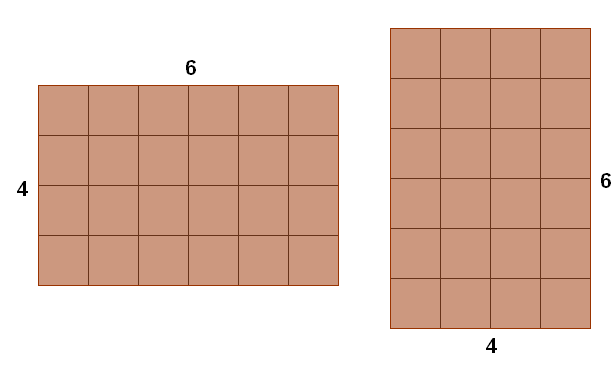The Geometry of Commutativity
One of the elementary observations about real numbers is that if we add the two numbers, regarding of the order, their sum is unique. We know that 4 + 3 = 3 + 4. This property is also the same when we multiply. If we have two numbers, regarding of the order, their product is also unique. For example, 6 x 3 = 3 x 6.
In general if we have real numbers a and b, we have a + b is always equal to b + a. Also, if we have real numbers c and d, c x d is always equal to d x c. These are called the commutative property of addition and multiplication, two of the axioms of algebra.
Although axioms, as we have discussed, are statements that we accept without proof, some axioms can be explained intuitively. In this post, we are going to discuss the two axioms mentioned above intuitively using geometric representations.
The geometry of a + b
One way of understanding why a + b is always equal to b + a is by representing the two numbers as lengths. For instance, we can represent the addition of integers above (4+3 = 3 + 4) as the sum of the lengths of two segments. In geometric representation, reversing the order of the numbers in the operation is just like rotating the segment 180 degrees about the center as shown below. Of course, rotating the segment way will never change its length.

Now, since that we can substitute any positive numbers to a and b we are sure that the commutative property is true for all positive numbers.

The geometry of a × b
If a + b can represent lengths, c × d can represent area of a rectangle with height c and base d. For example, the rectangle on the left has a base of 6 units and a height of 4 units. Its area is 6 × 4 = 24 square units. If we reverse the order, 4 × 6, is just a representation of the area of a rectangle with a base 4 units and height 6 units. As we can see, this does not change the are of the rectangle. We just rotated it 90 degrees.

Again, if we just moved the rectangle without changing its height and its base, then the area will still be the same. That is why c × d = d × c for all positive numbers c and d.

Although the discussion above focused on the set of positive real numbers, we have learned that this can be extended to non-positive real numbers. We know that 5 x -3 = – 3 x 5 and 4 + (-8) = -8 + 4.
Related Articles
- The Distributive Property
- The Commutativity of Real Numbers
- Military Drills and the Closure Property of Real Numbers